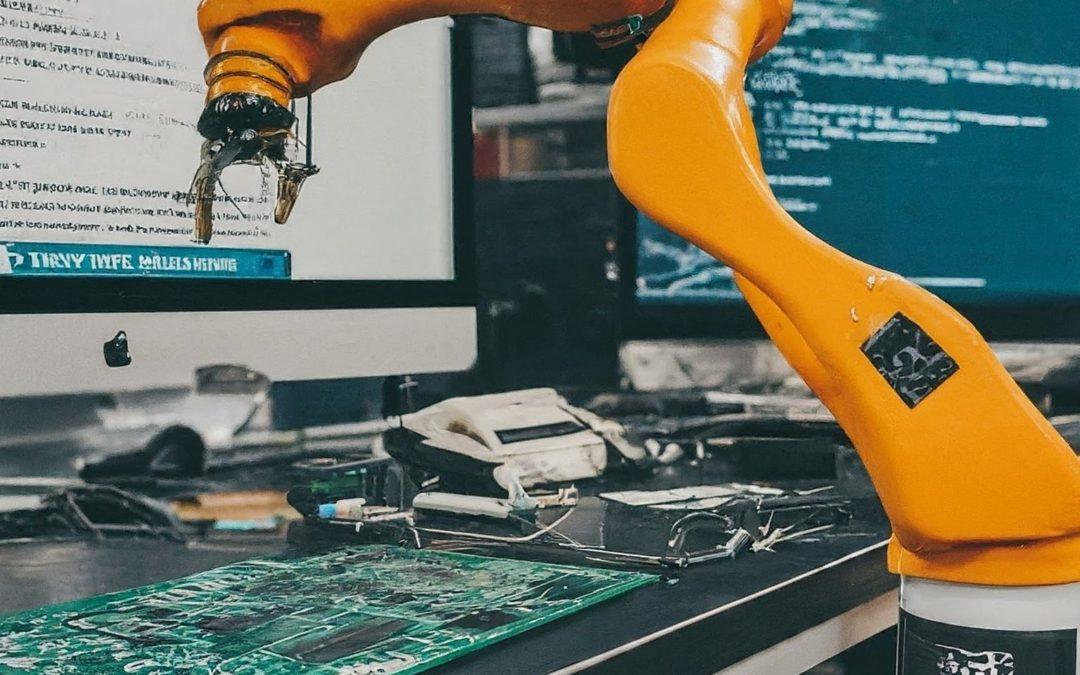Artificial intelligence (AI) is rapidly transforming our world, and 2024 is poised to be another year of significant advancements. From the way we interact with technology to the scientific discoveries we make, AI is having a profound impact on nearly every aspect of our lives.
In this blog post, we’ll explore some of the most exciting AI trends to watch in 2024, along with real-world examples:
1. The Rise of Multimodal AI
Traditionally, AI models have been trained on a single type of data, such as text or images. However, multimodal AI models can process information from multiple modalities, such as text, images, audio, and video. This allows them to develop a more comprehensive understanding of the world and perform tasks that were previously impossible.
- Example 1: A retail company could use a multimodal AI model to analyze customer reviews that include text, images, and videos of clothing items. The AI model could then identify trends in customer sentiment and preferences, such as a preference for certain colors or styles. This information could then be used to improve the company’s product offerings and marketing campaigns.
- Example 2: A self-driving car could use a multimodal AI model to process information from its cameras, radar, and lidar sensors. The AI model could then use this information to navigate the road safely, avoiding obstacles and pedestrians.
2. Smaller, More Efficient AI Models
Large language models (LLMs) have captured the public imagination with their ability to generate human-quality text and translate languages. However, LLMs are often computationally expensive and require a significant amount of data to train.
In 2024, we’re likely to see a rise in smaller, more efficient AI models. These models will be able to perform many of the same tasks as LLMs, but with a smaller footprint and lower computational requirements. This will make AI more accessible to a wider range of businesses and organizations.
- Example: A small business could use a compact AI model to automate tasks such as customer service or social media marketing. This would allow the business to save time and money, and to provide better service to its customers.
3. AI for Science
AI is already being used in a variety of scientific fields, and its impact is only going to grow in 2024. AI can be used to analyze large datasets of scientific data, identify patterns that humans might miss, and accelerate scientific discovery.
- Example: In the field of medicine, AI can be used to analyze medical images, such as X-rays and MRIs, to identify diseases at an early stage. This can lead to earlier treatment and better patient outcomes.
- Example: In the field of astronomy, AI can be used to analyze data from telescopes to identify new galaxies and planets.
4. The Democratization of AI
AI is no longer just for tech giants and research institutions. In 2024, we’ll see a continued trend of AI democratization, as a growing number of tools and resources become available to businesses and individuals of all sizes.
- Example: There are now a number of cloud-based AI platforms that allow businesses to train their own AI models without having to invest in expensive hardware or software. This is making AI more accessible to startups and small businesses.
- Example: There are also a growing number of AI-powered tools available for consumers, such as AI-powered chatbots that can provide customer service or AI-powered virtual assistants that can help with tasks such as scheduling appointments or managing finances.
5. The Growing Importance of AI Ethics and Regulation
As AI becomes more powerful and pervasive, the need for ethical guidelines and regulations becomes increasingly important. In 2024, we’re likely to see more discussions about the ethical implications of AI, such as bias, fairness, and transparency.
- Example: It is important to ensure that AI models are not biased against certain groups of people. For example, an AI model that is used to approve loan applications could be biased against people of color if it is trained on data that is biased.
- Additionally, it is important to ensure that AI models are transparent. This means that we should be able to understand how AI models make decisions. This is important for building trust in AI and for ensuring that AI models are used in a responsible manner.
Conclusion
AI is a rapidly evolving field, and 2024 is shaping up to be a year of significant advancements. The trends we’ve discussed in this blog post are just a few of the ways that AI is transforming our world. As AI continues to develop, it

